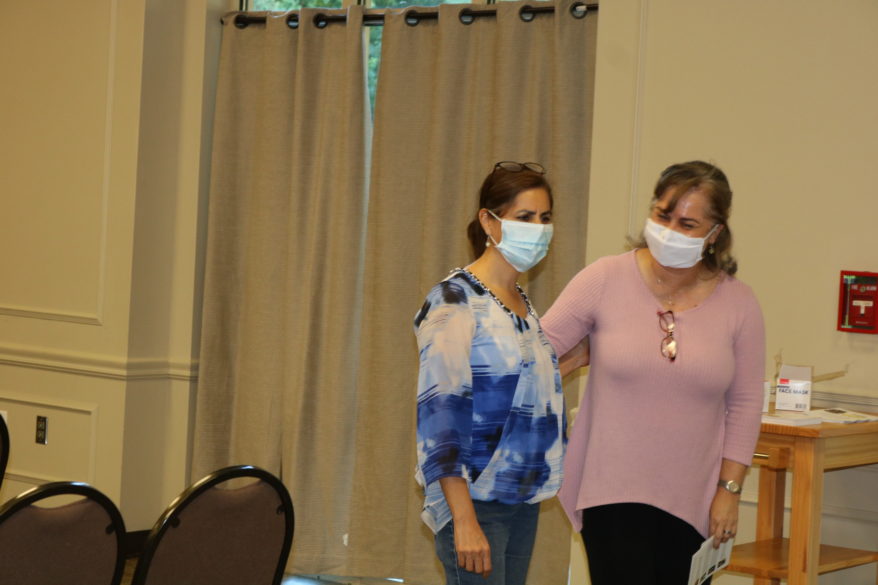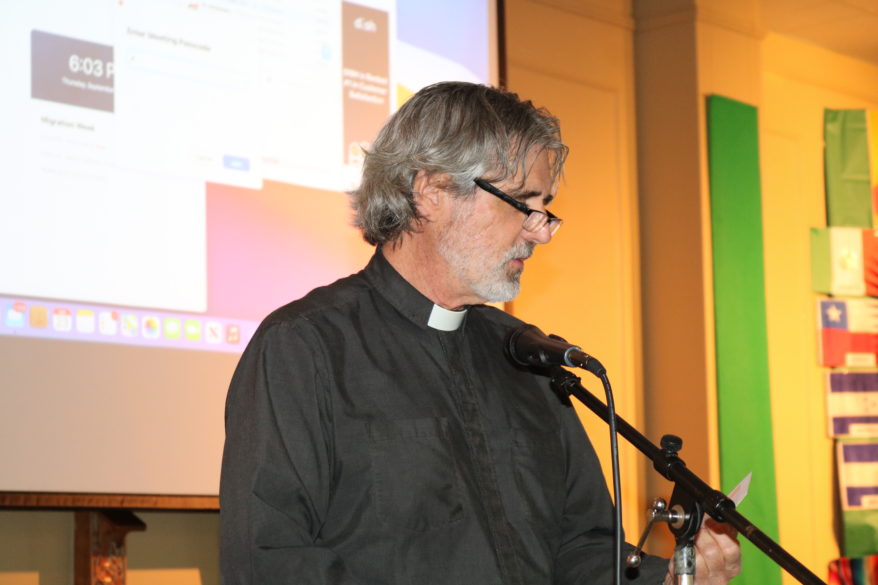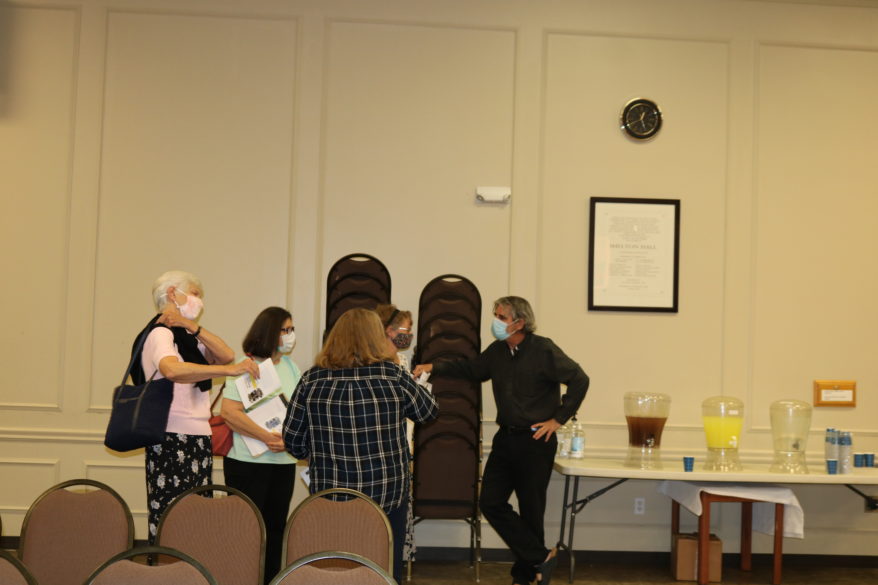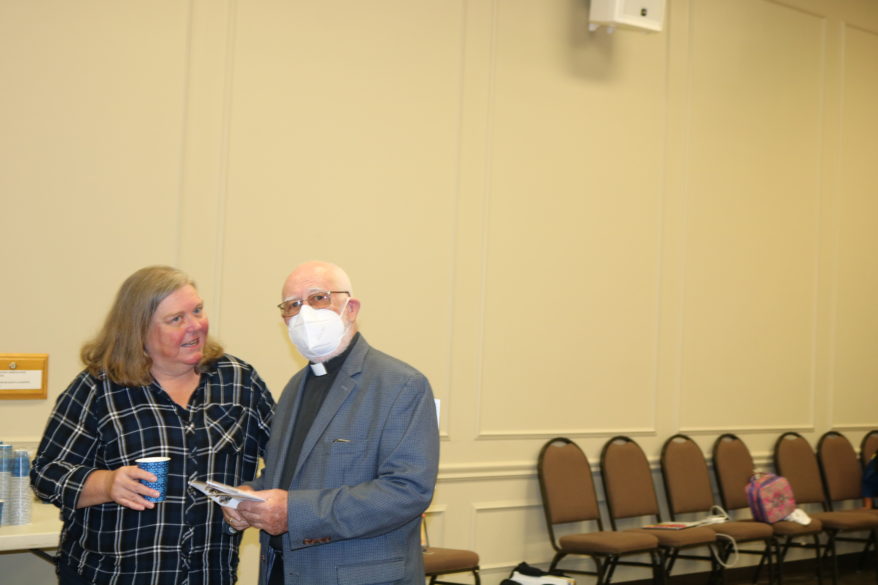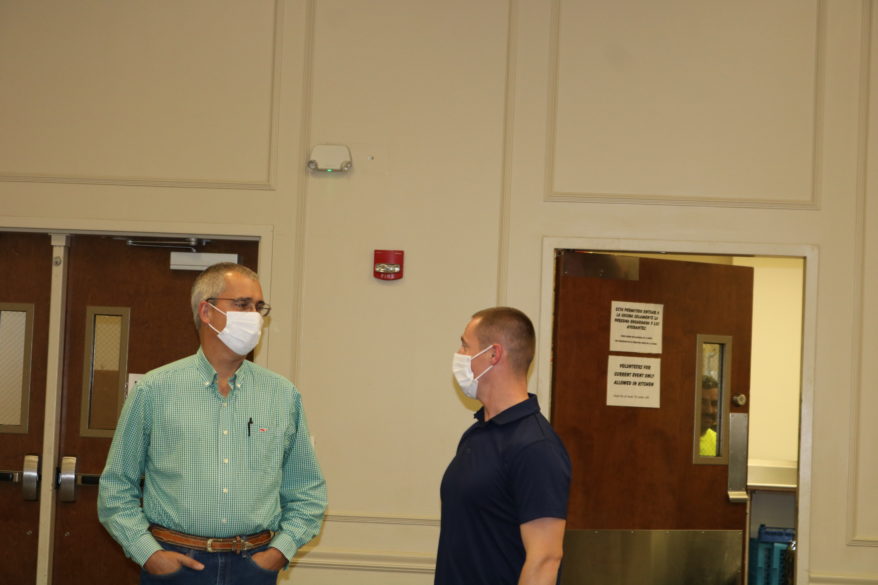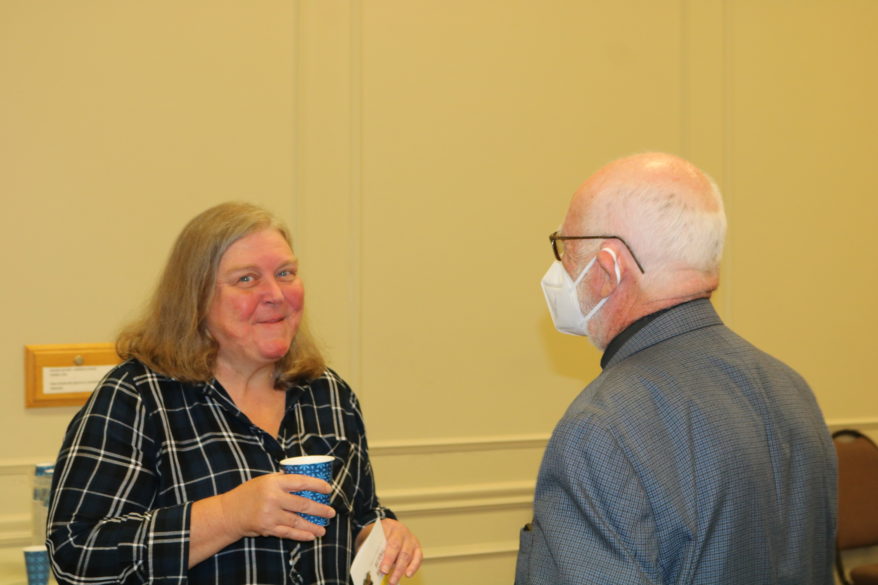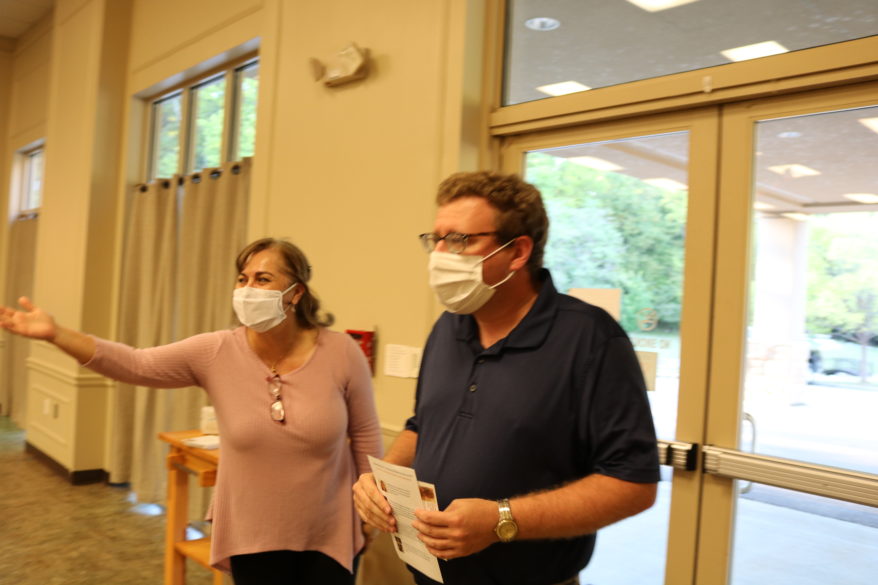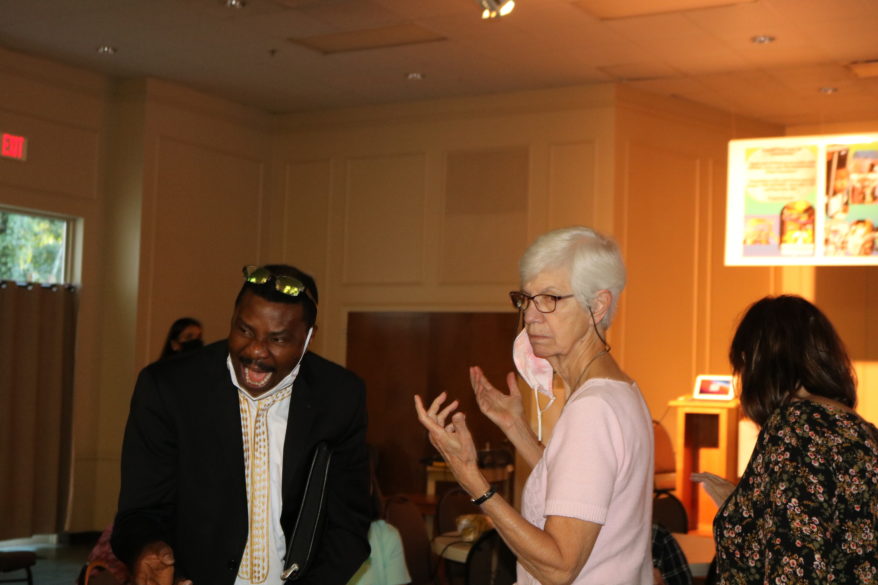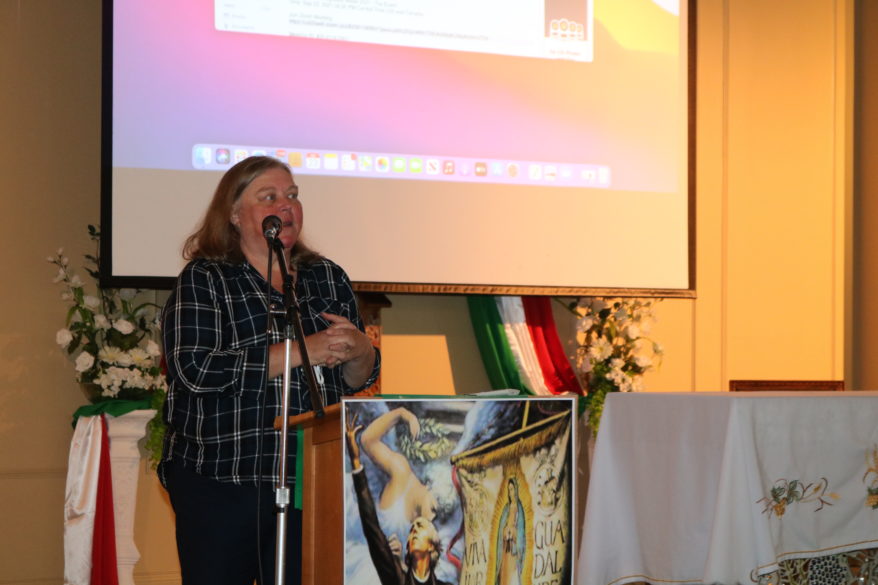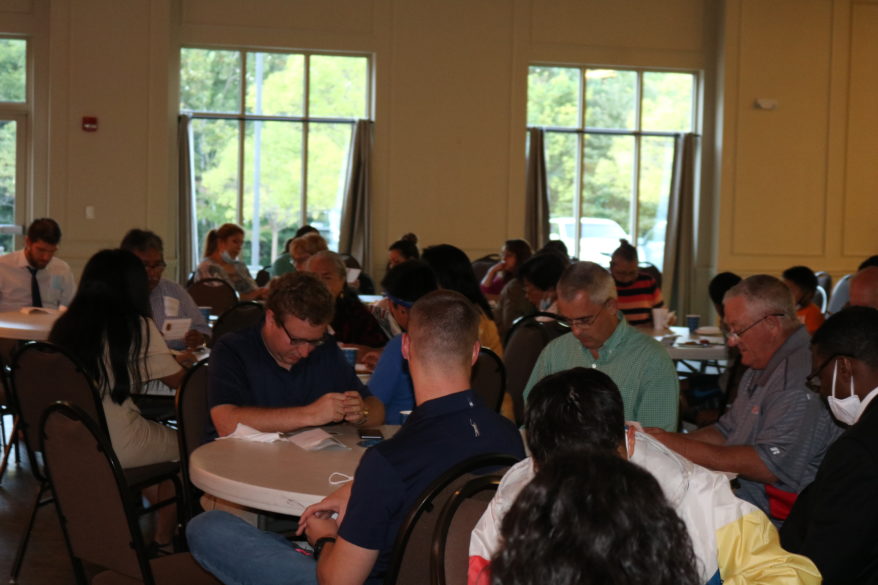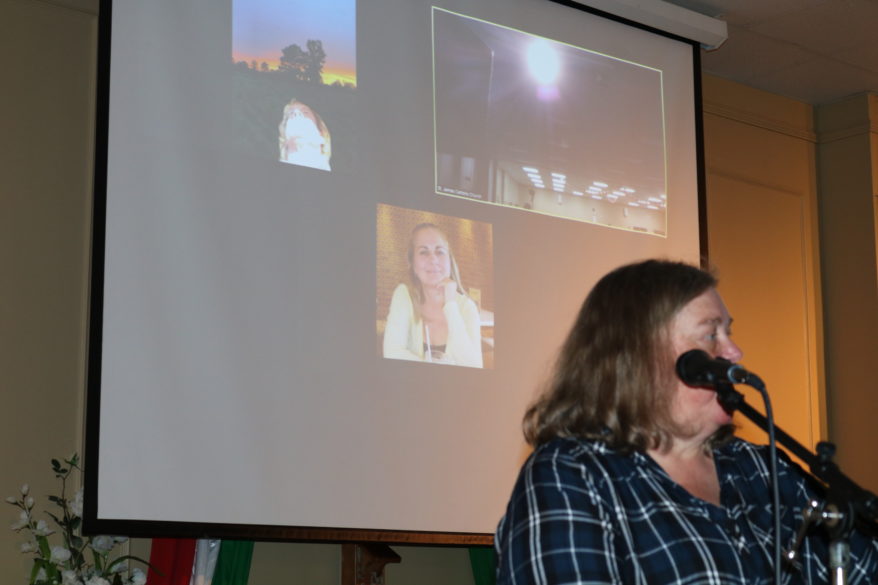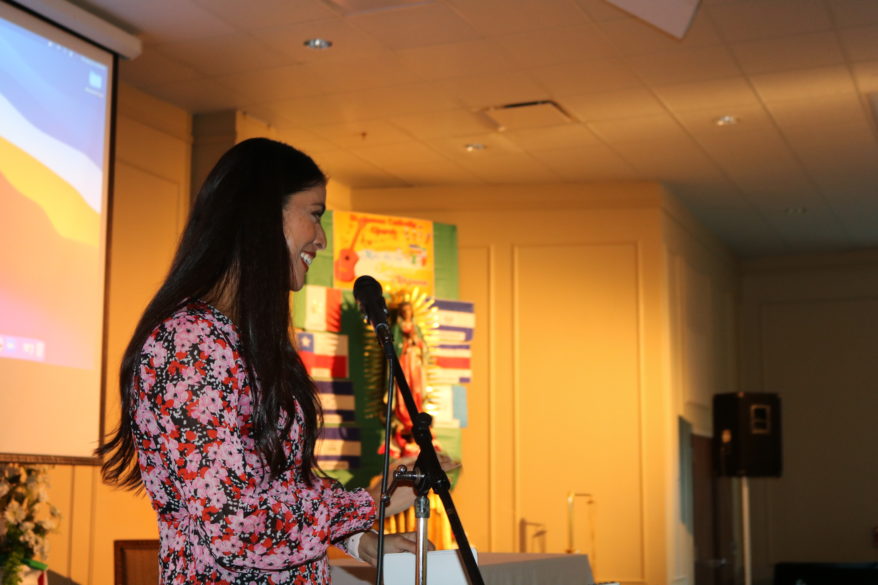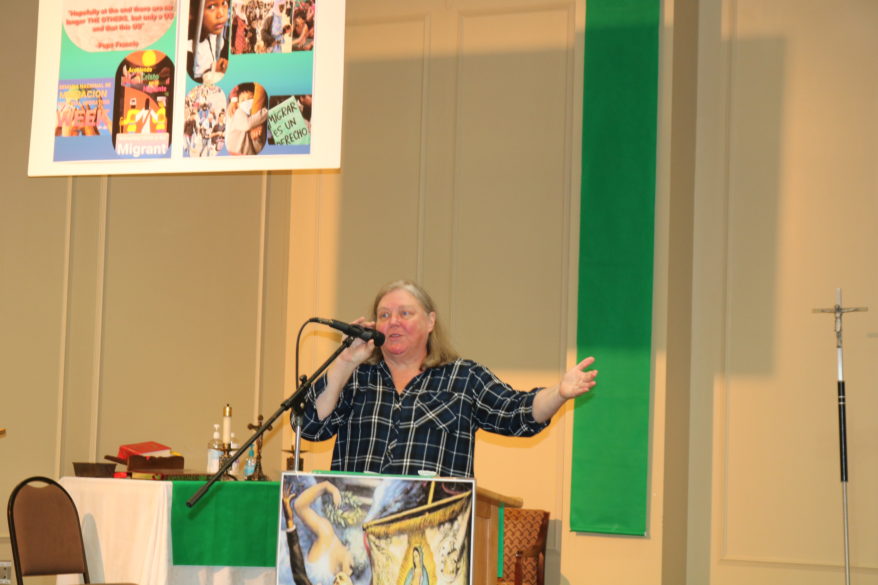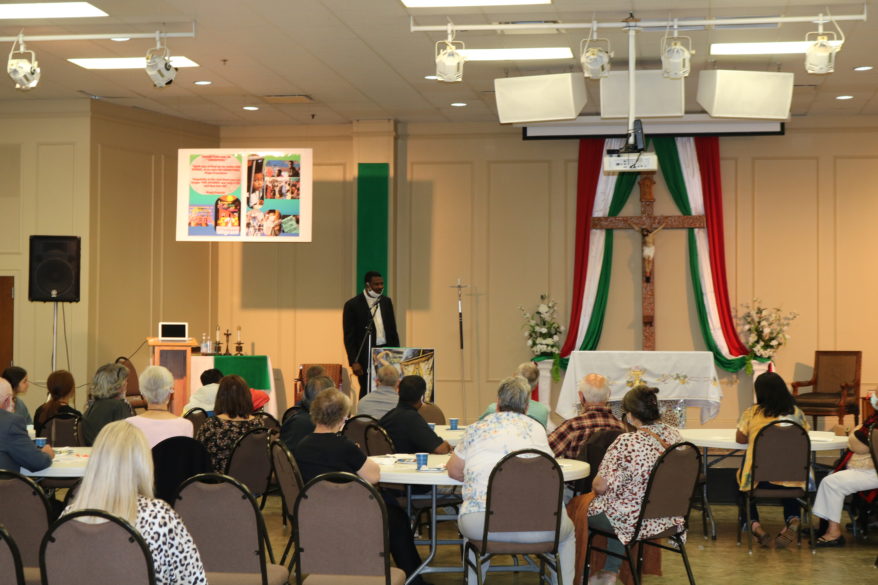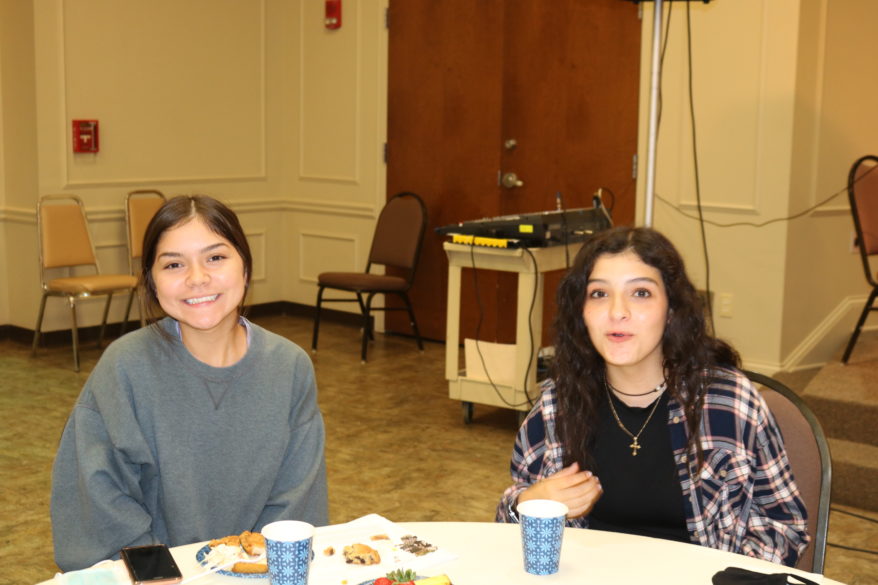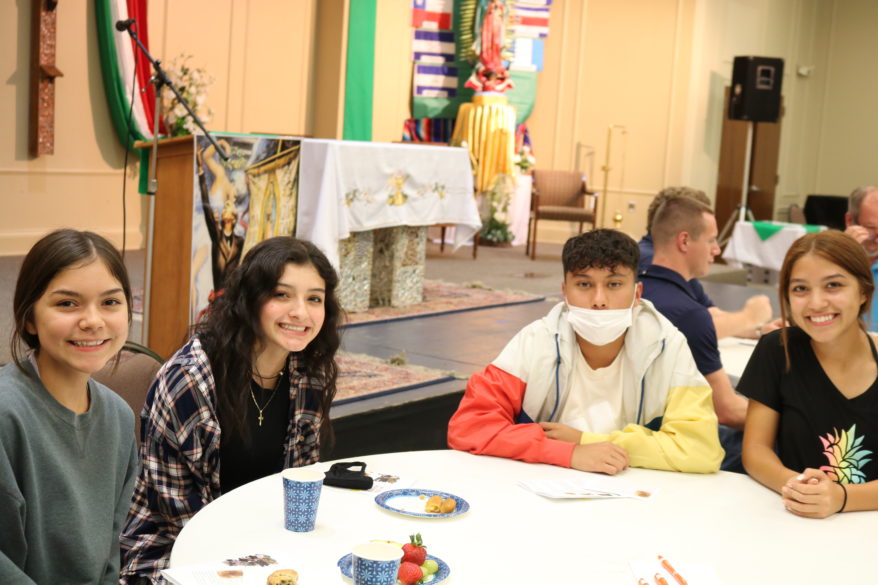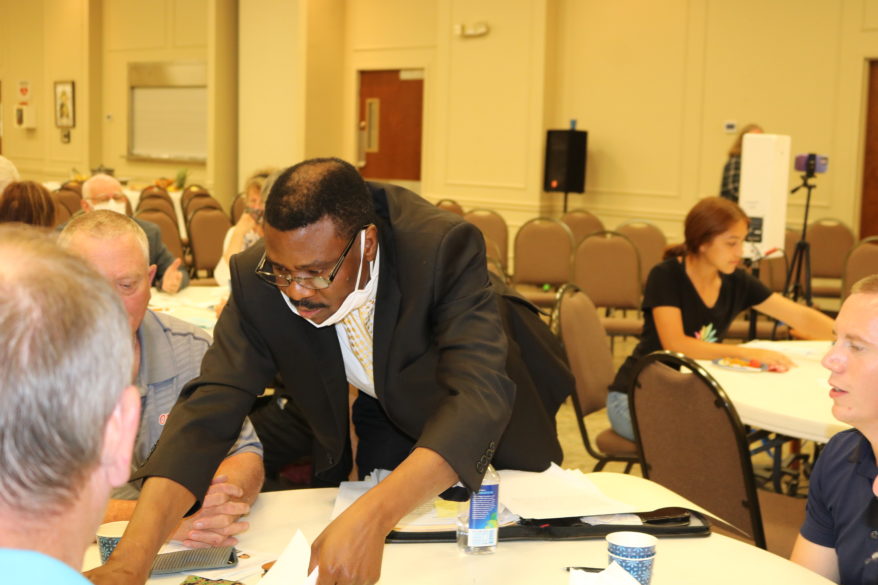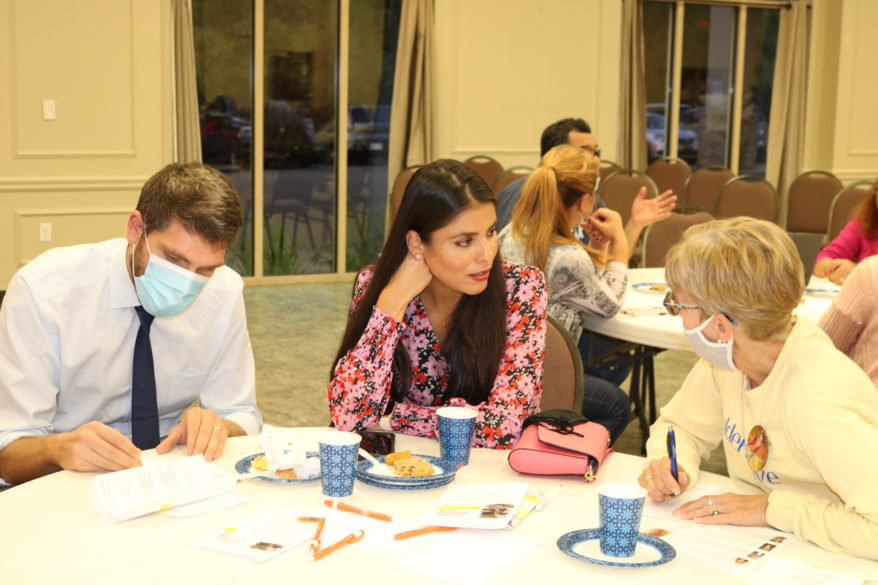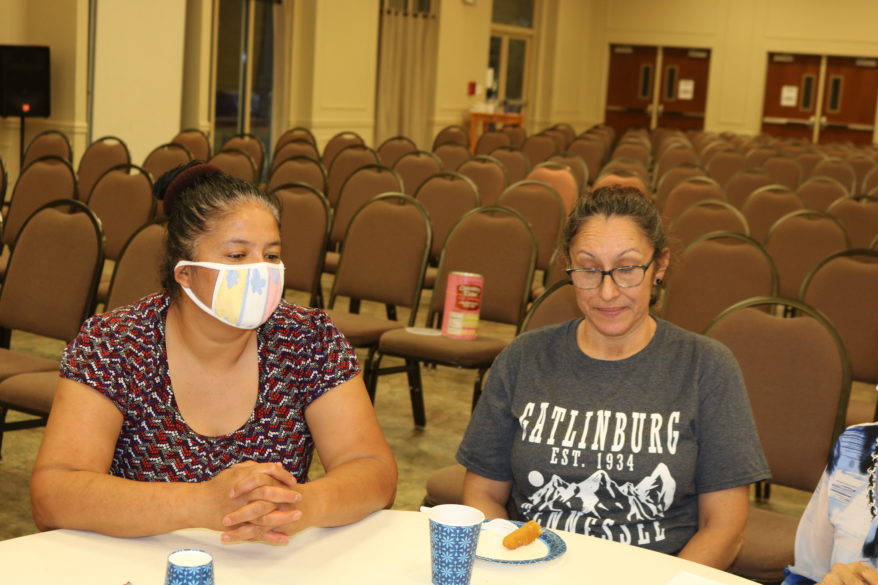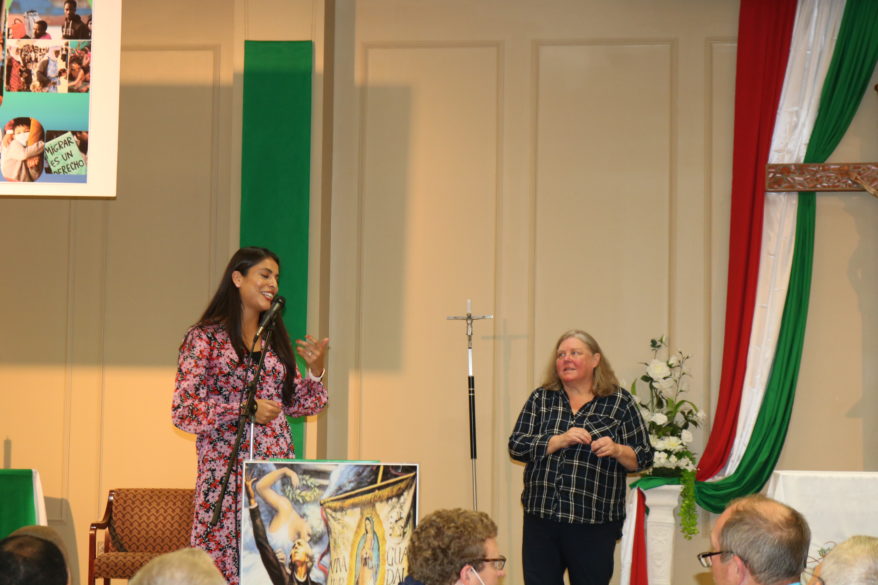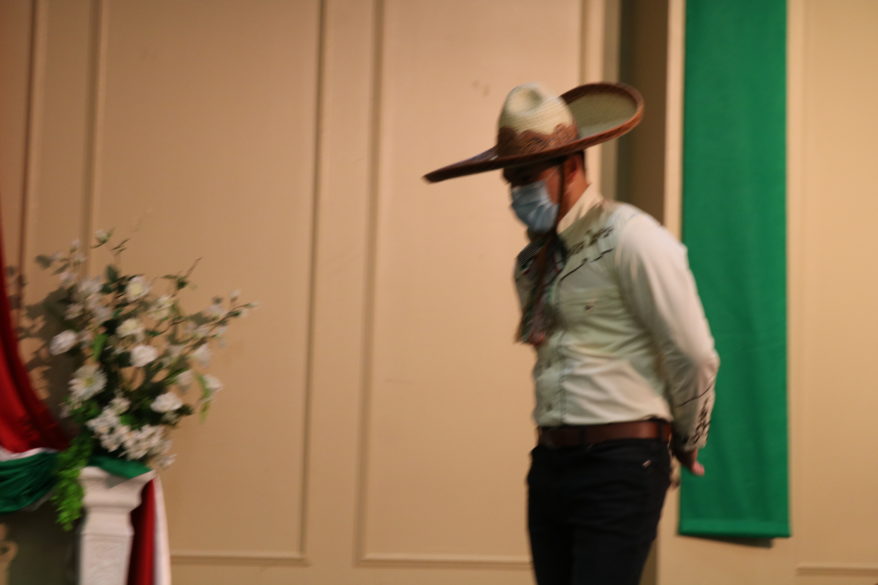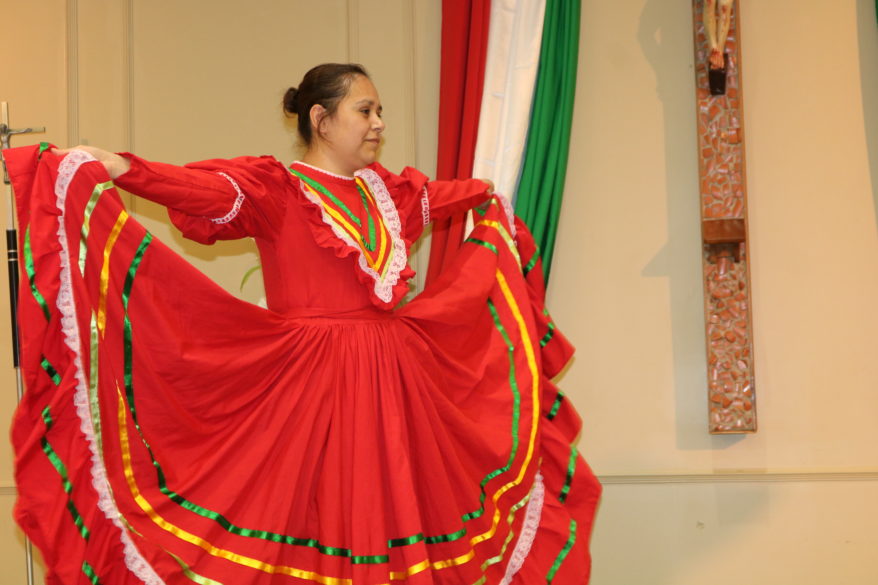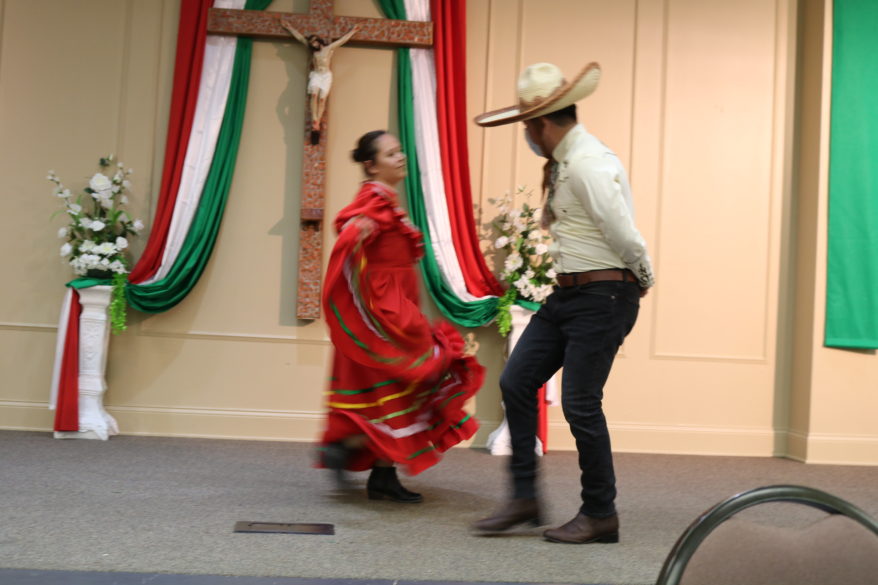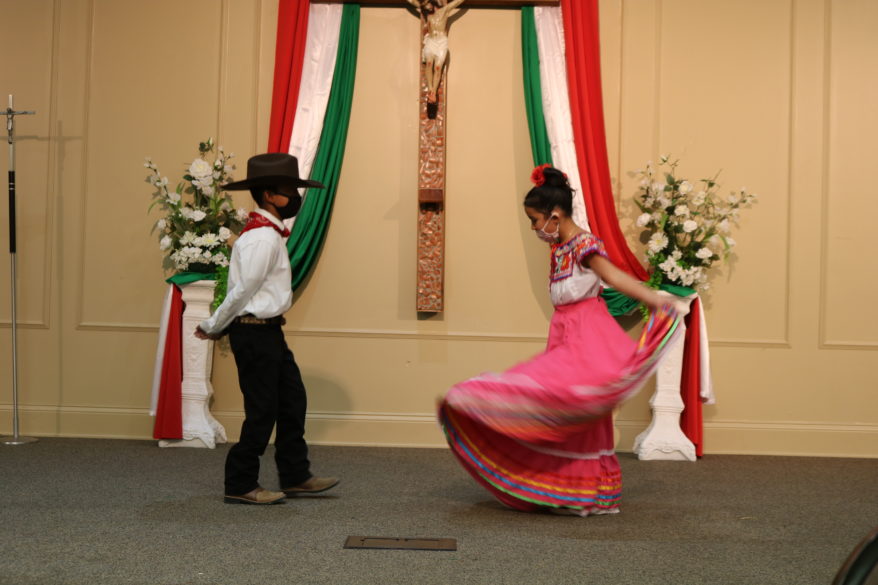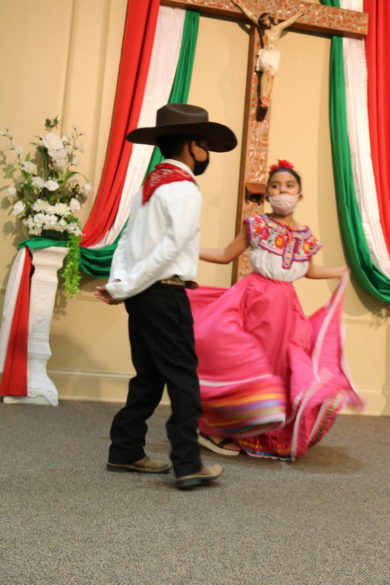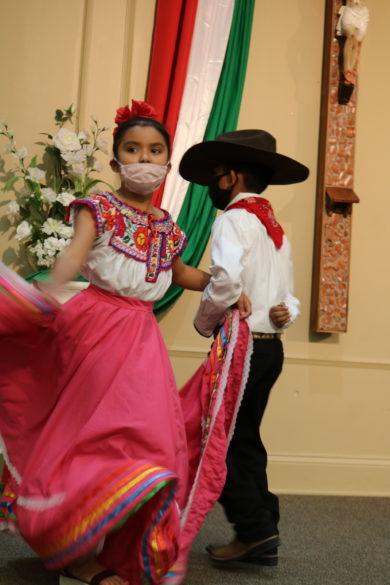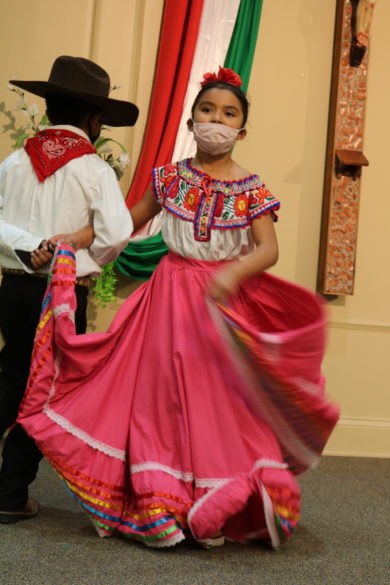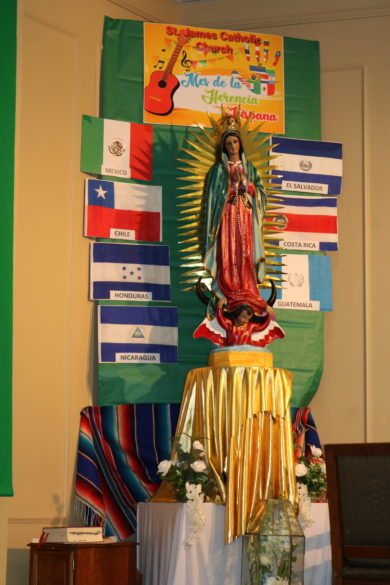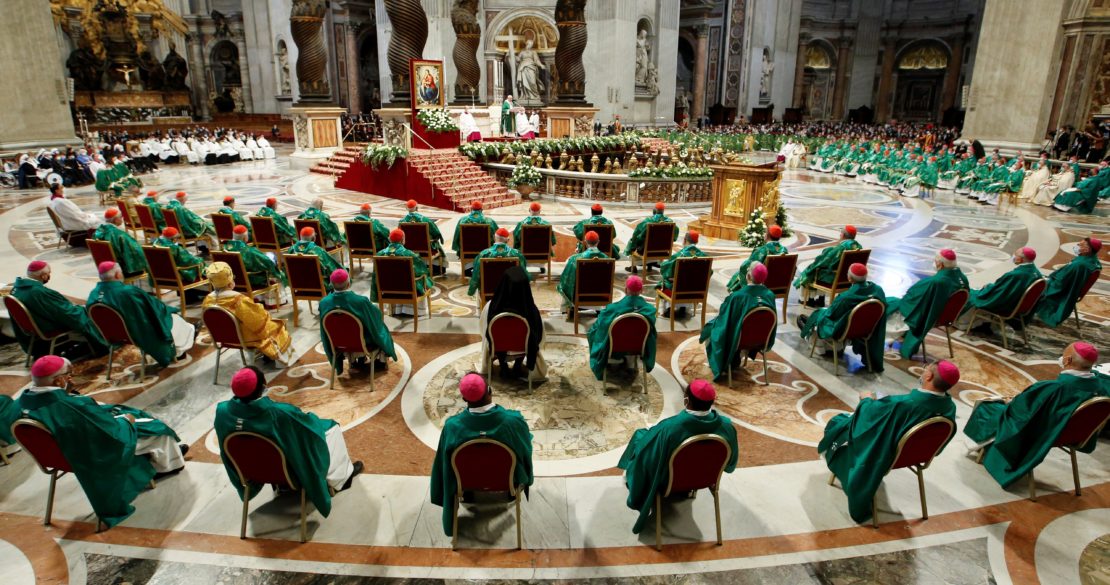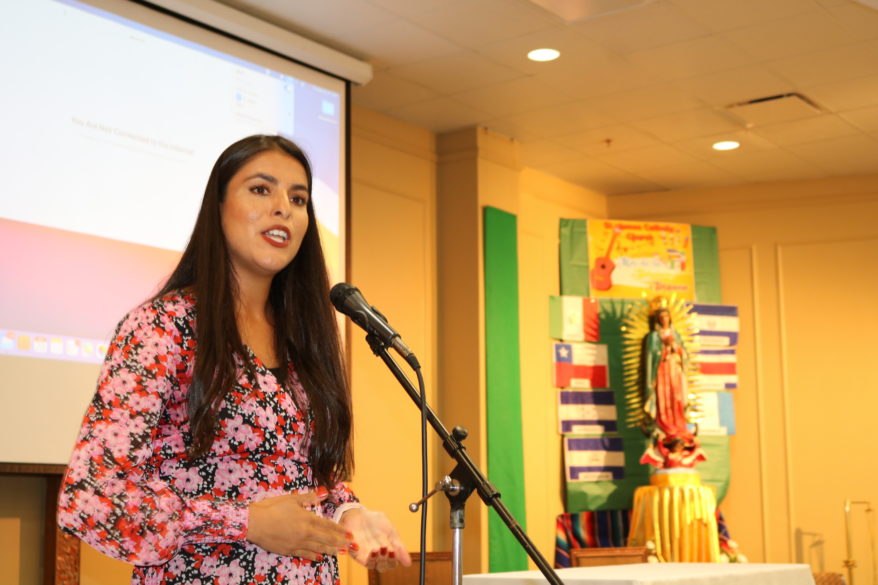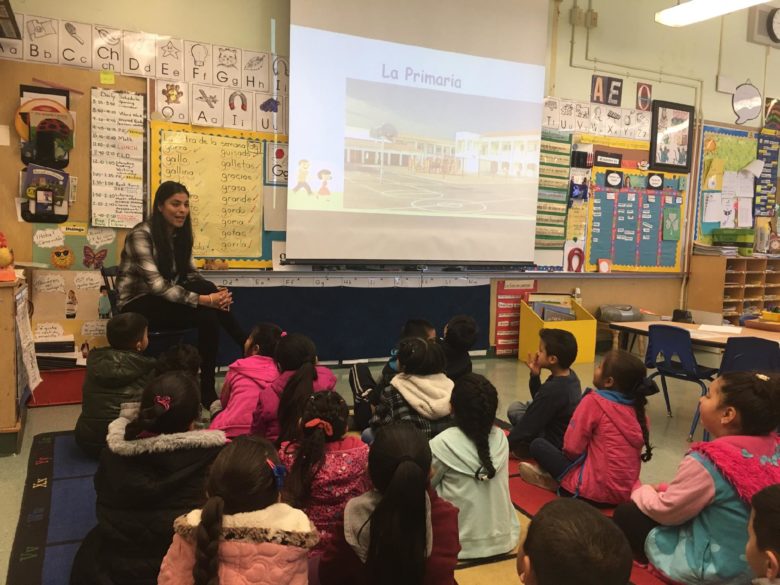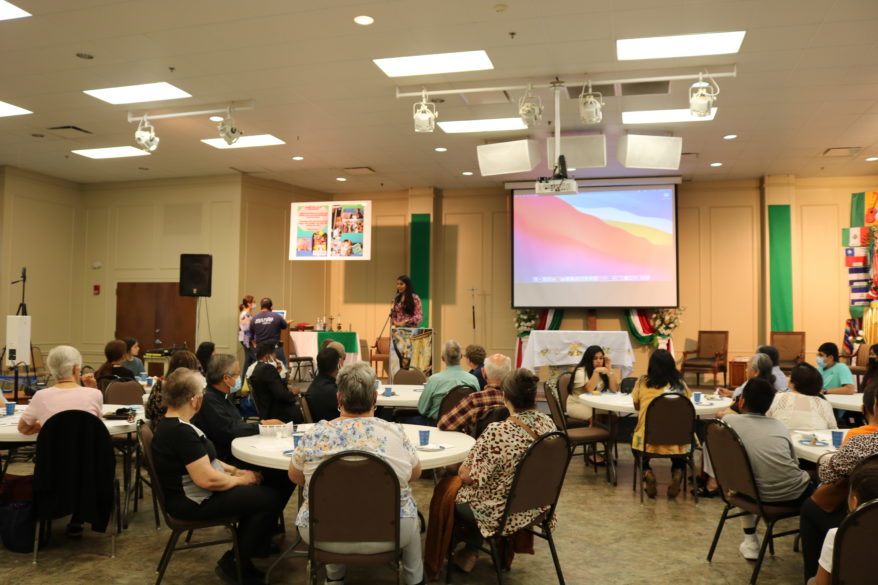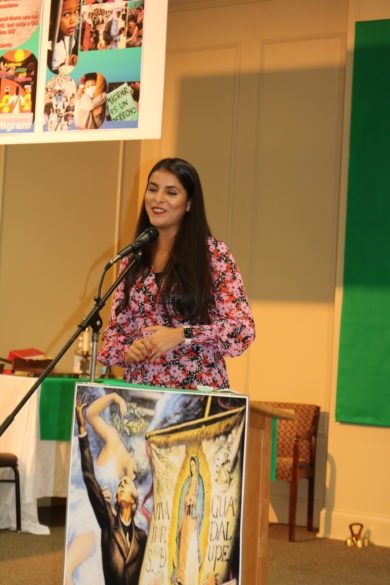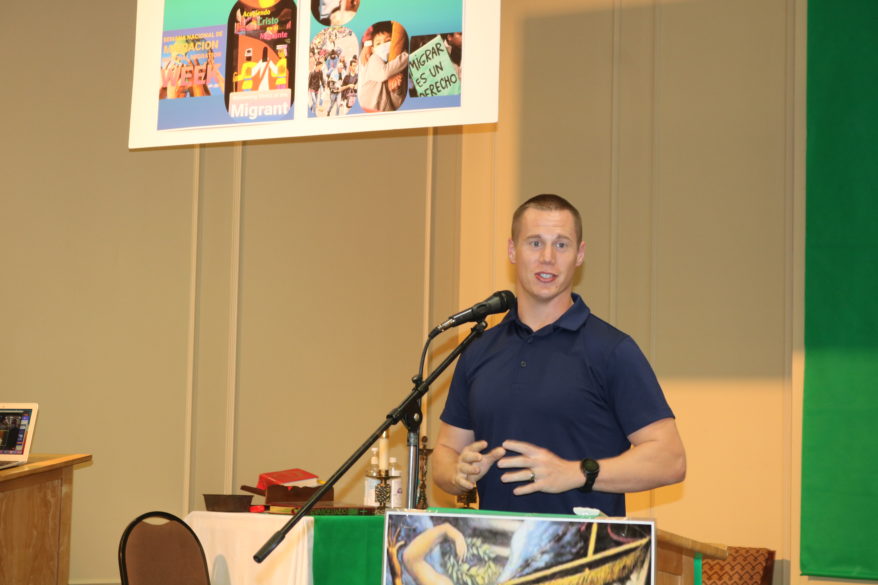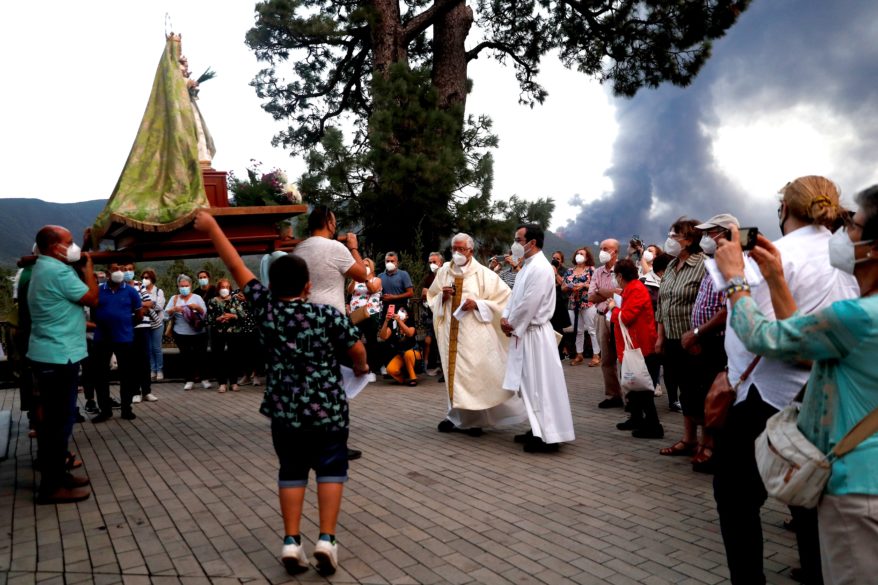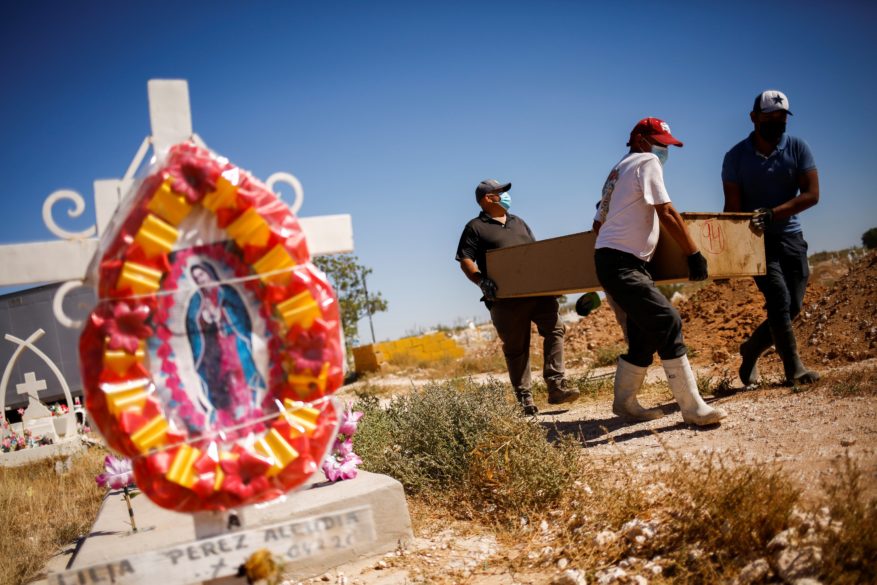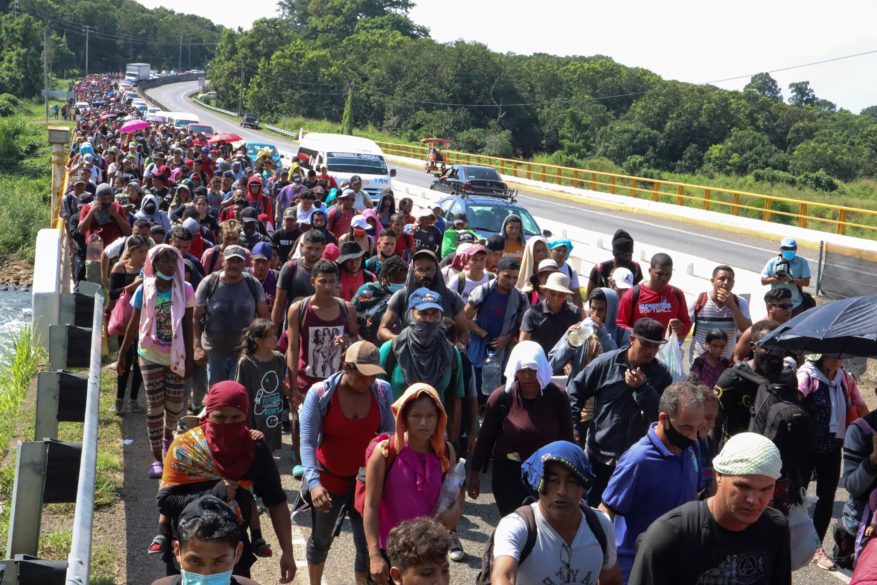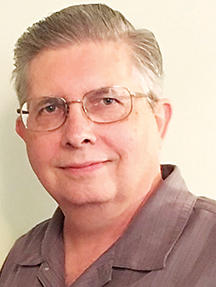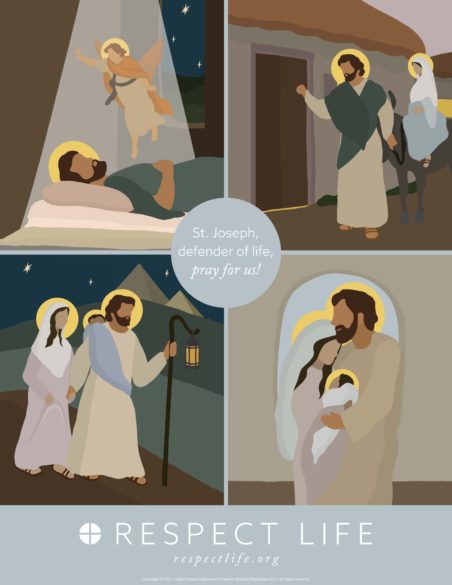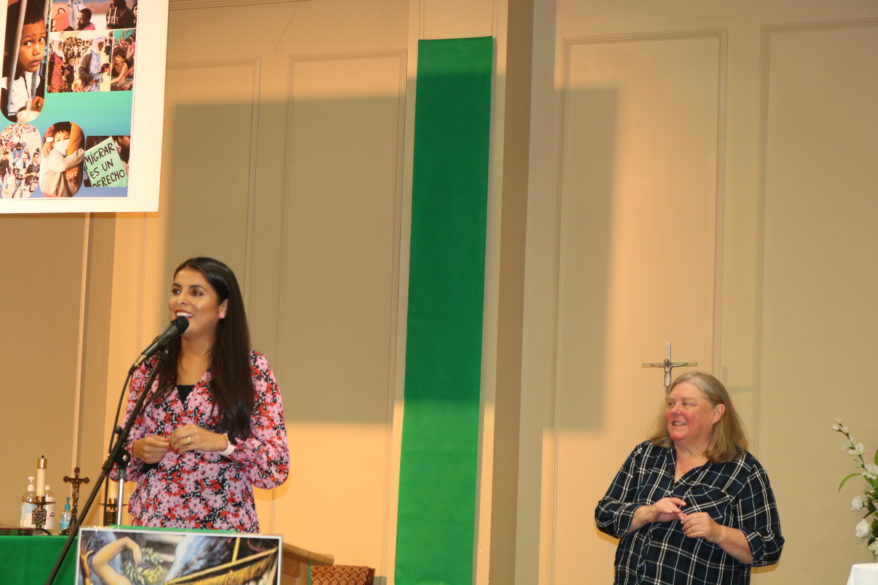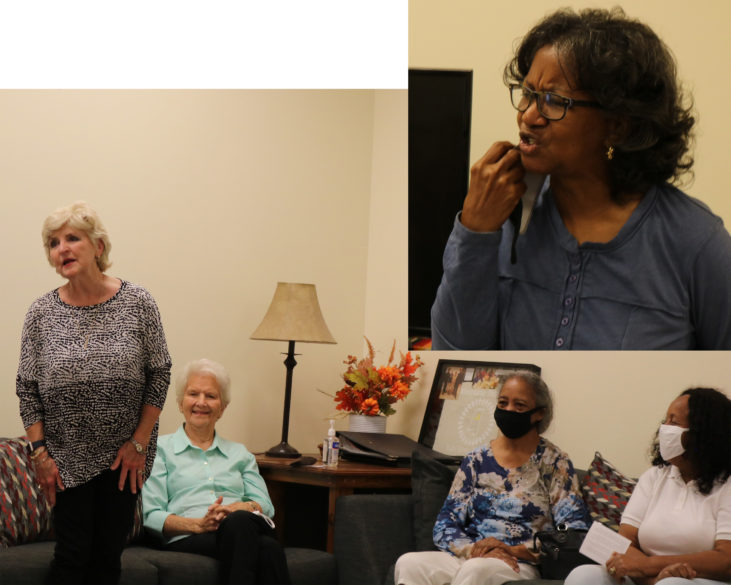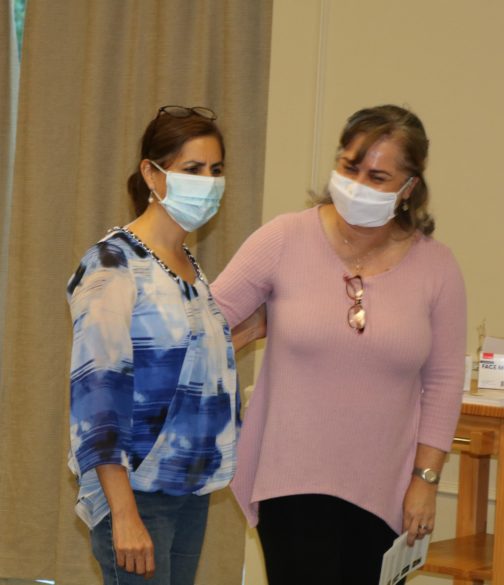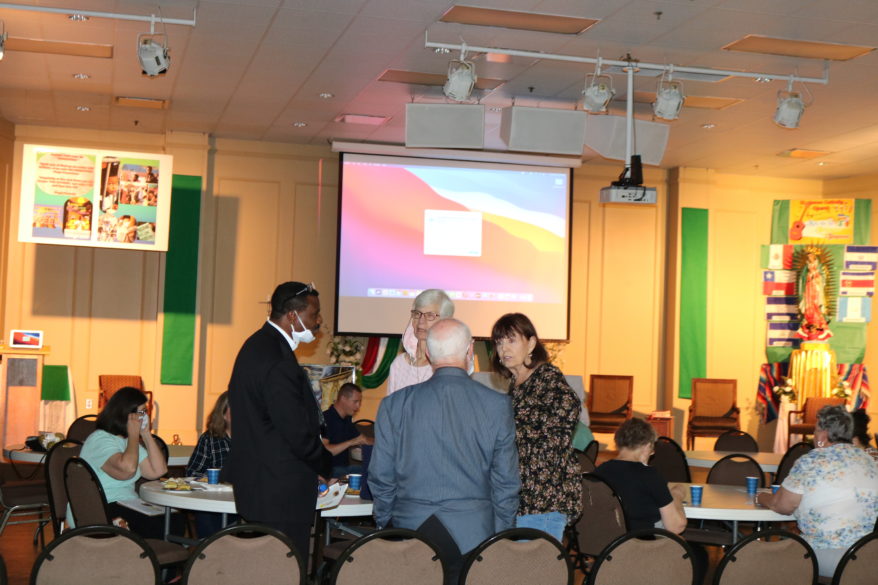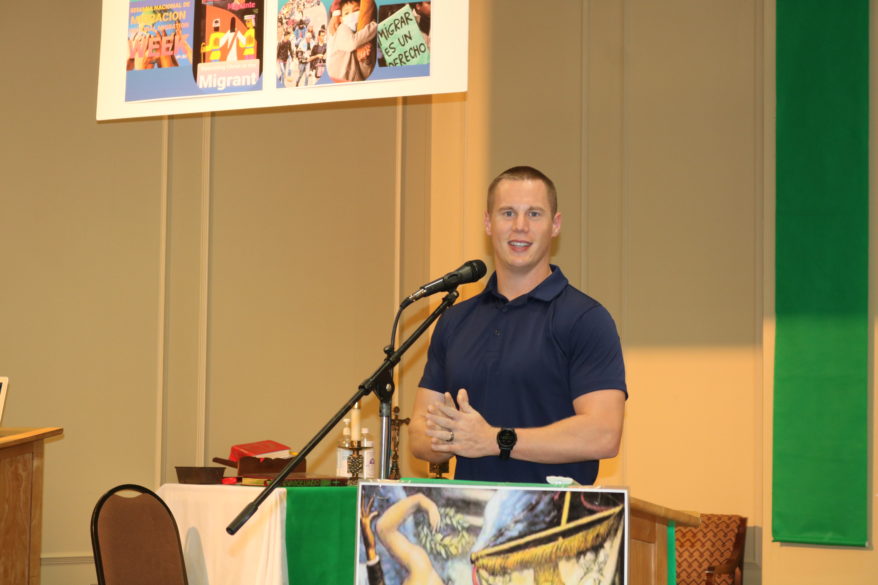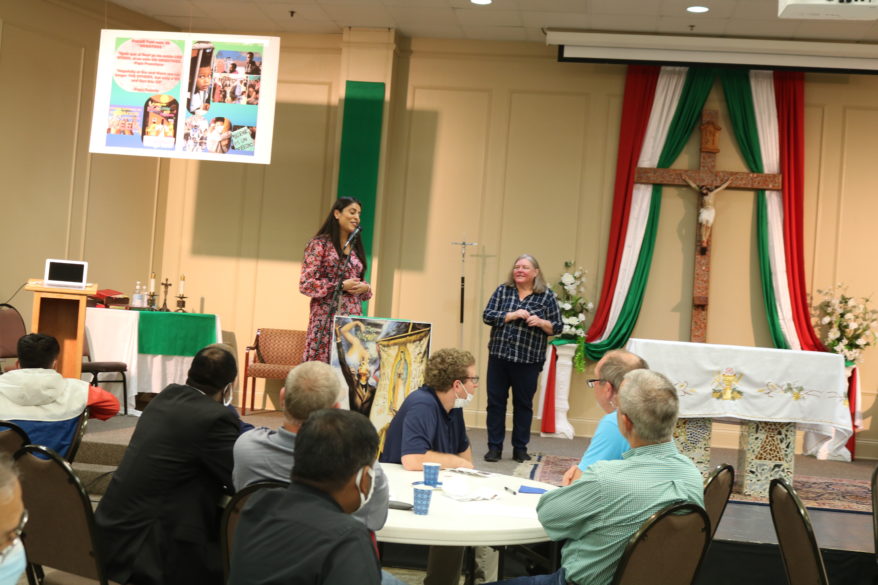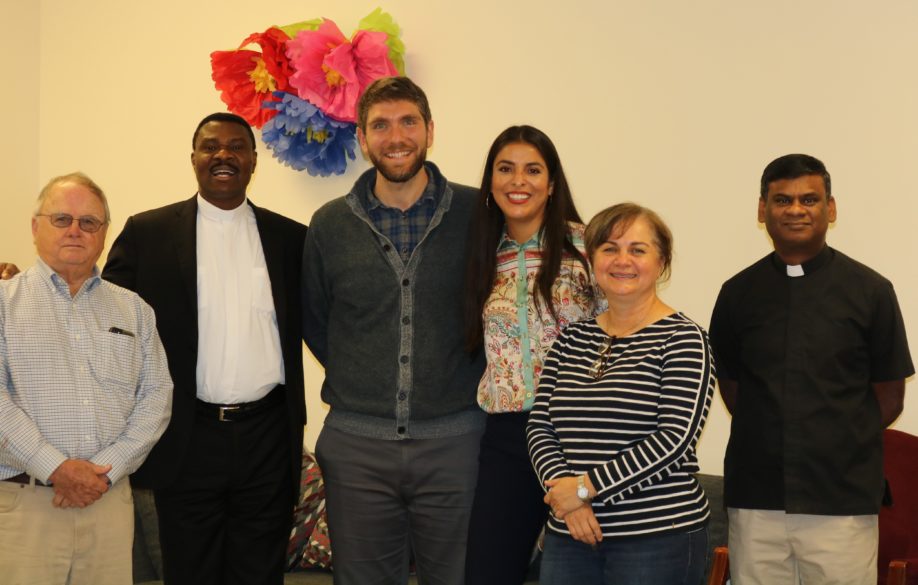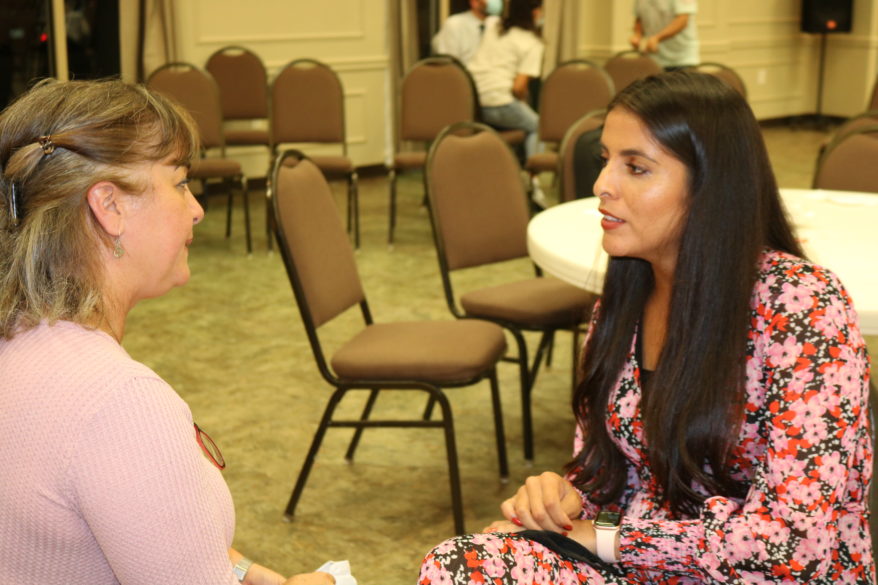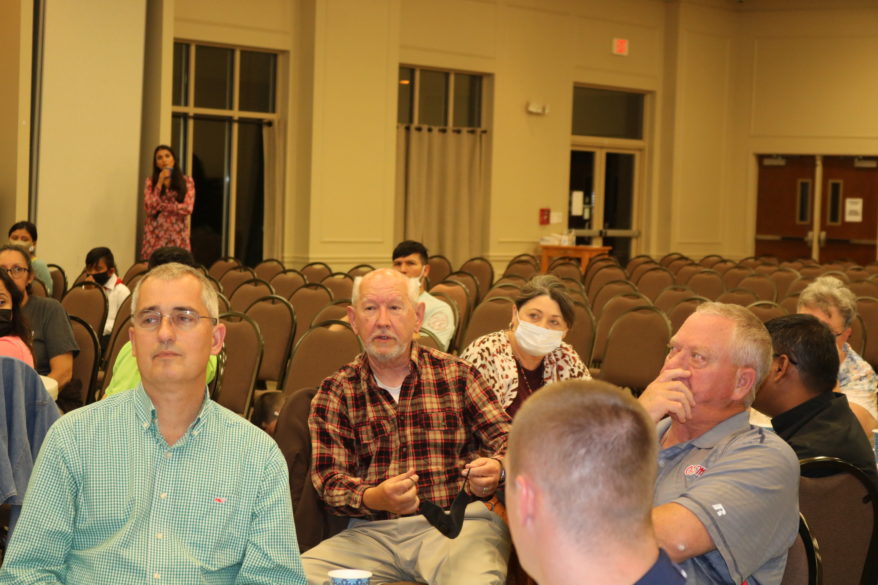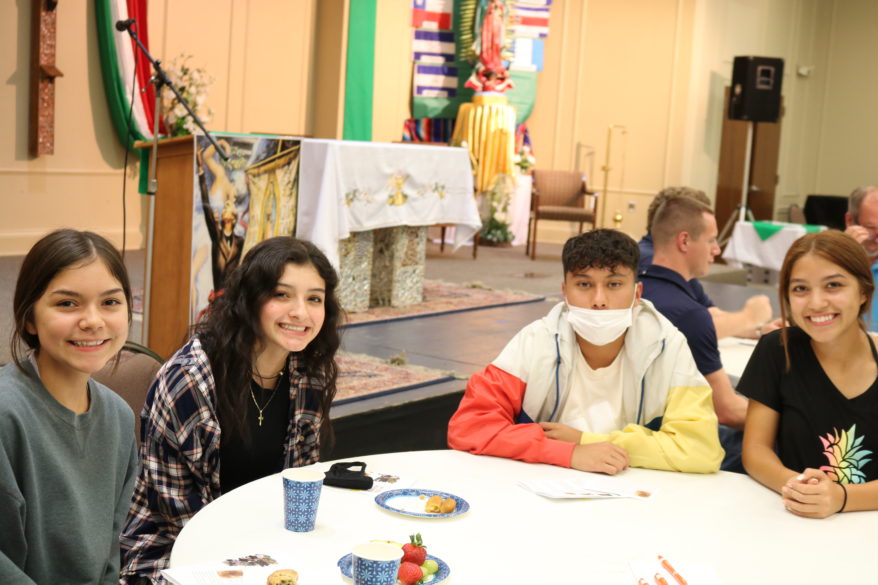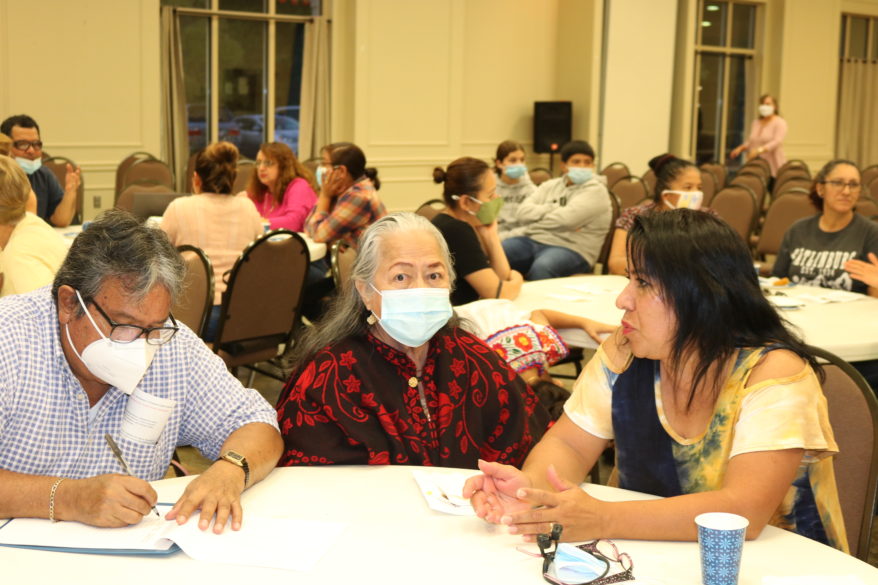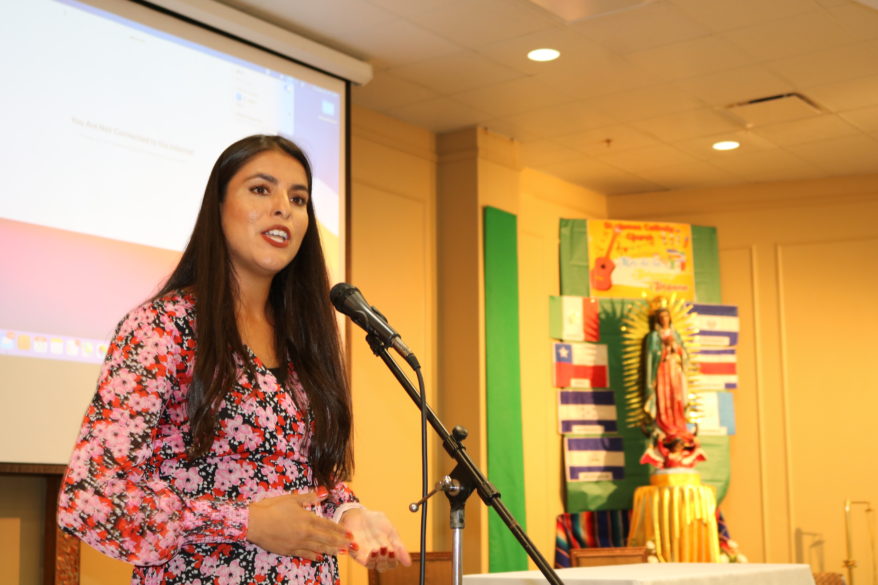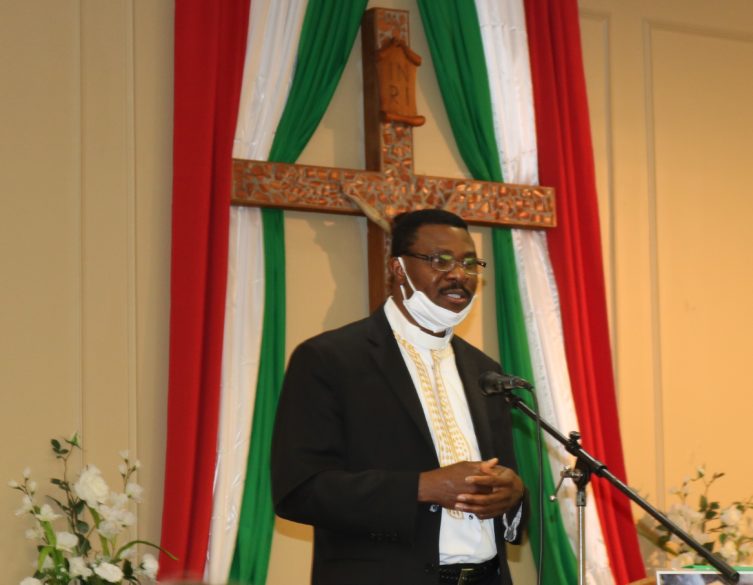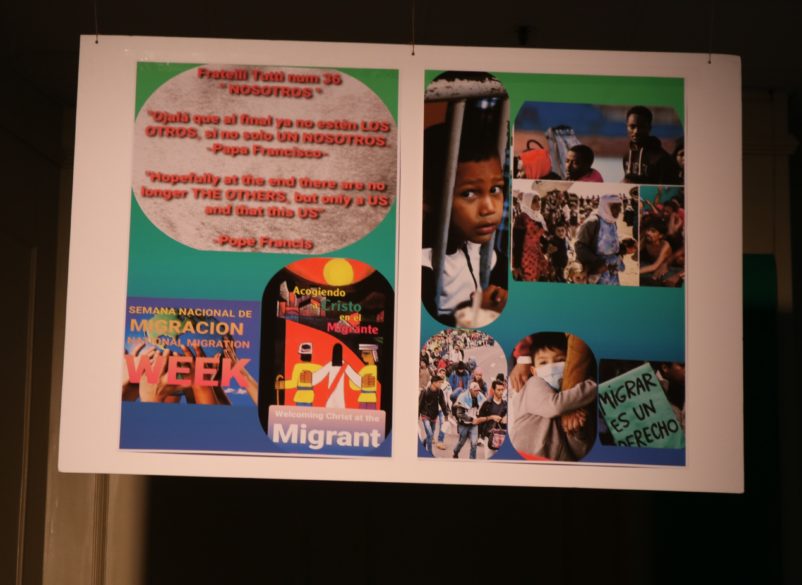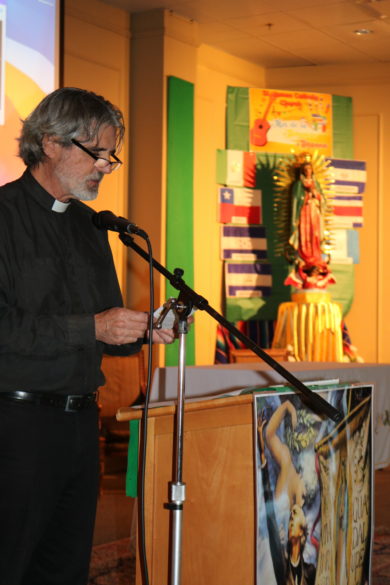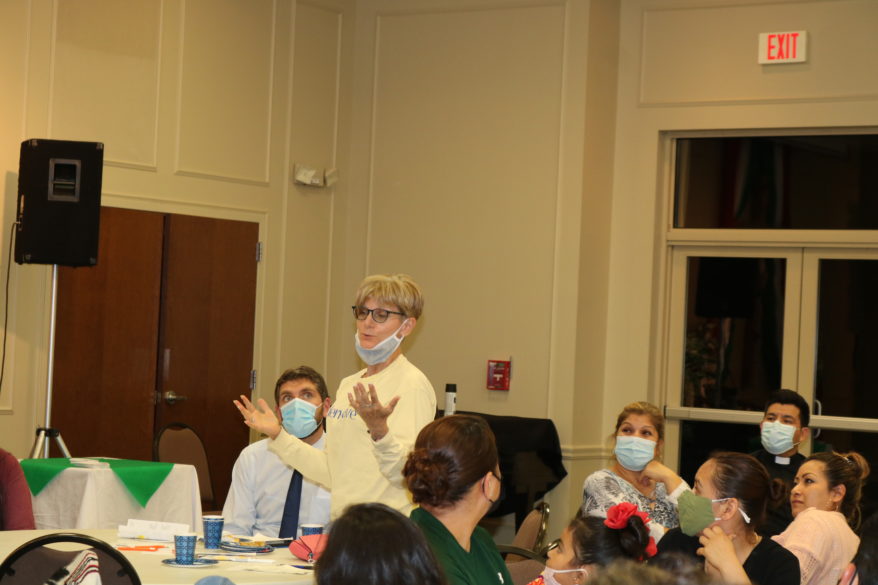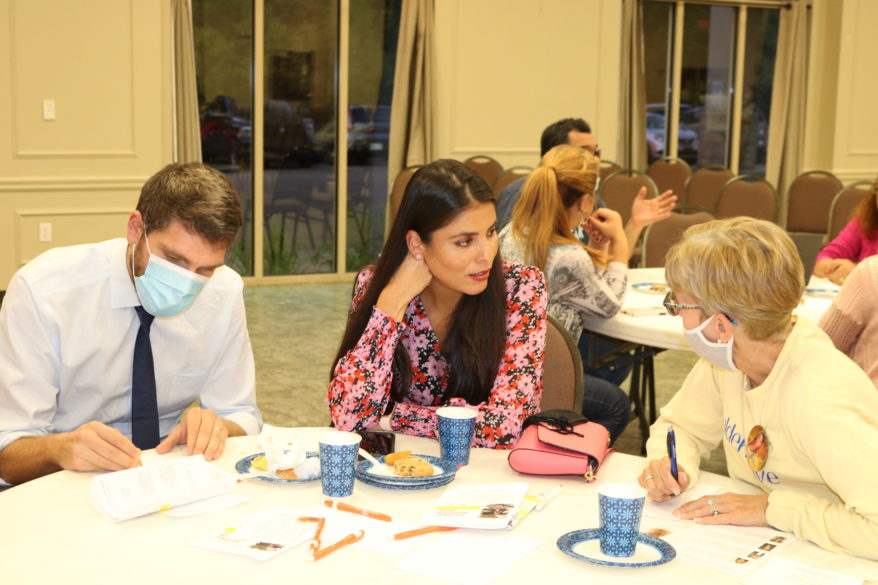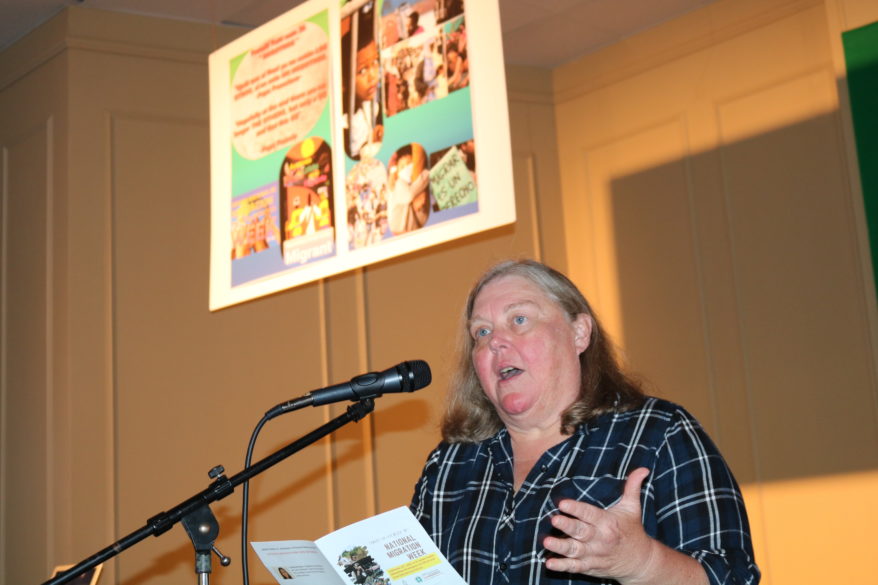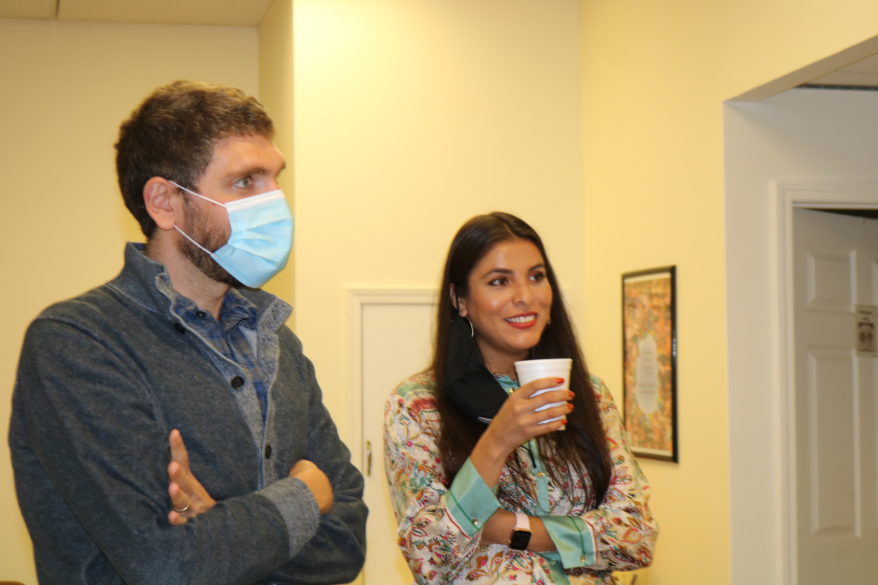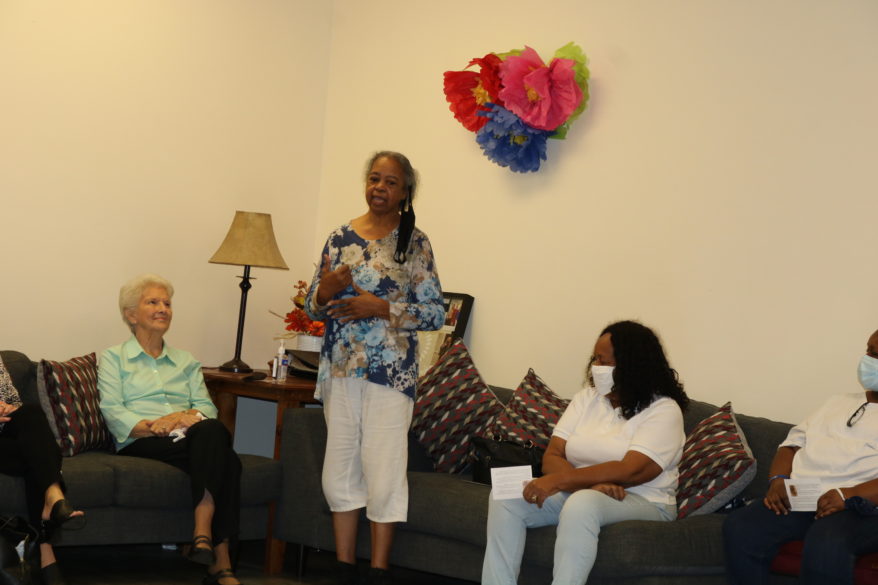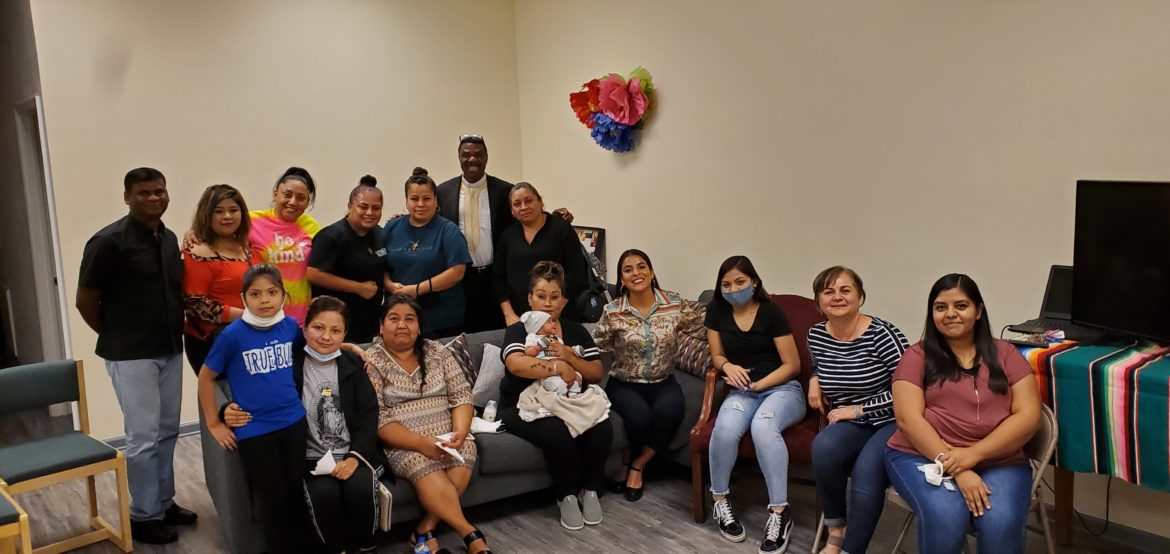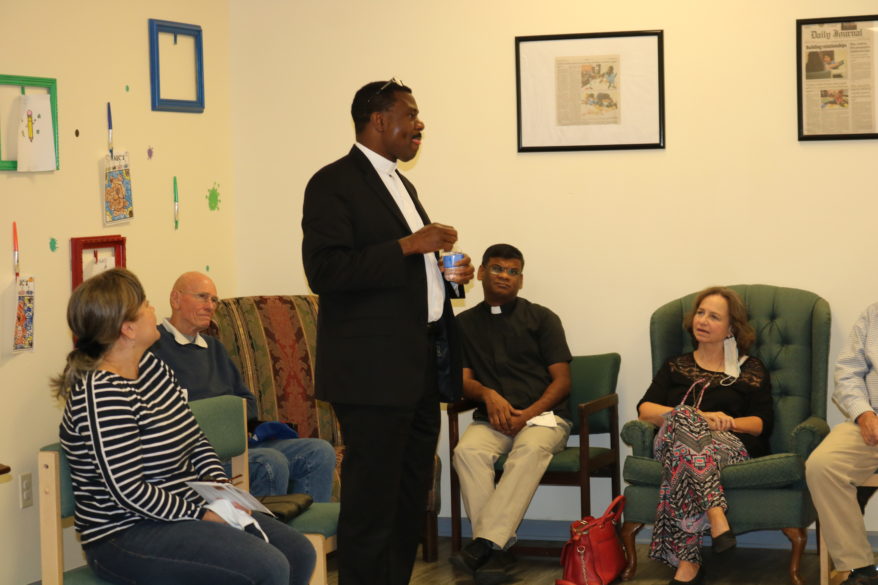Por Berta Mexidor
JACKSON – Las experiencias y enseñanzas de dos madres estuvieron en el centro de la celebración de la Semana Nacional de la Migración en St. James Tupelo, el jueves 24 de septiembre. La Sra. Oyafemi le enseñó a su pequeño niño que cuando alguien le pregunta ¿de dónde eres? debes responder “Soy un ciudadano del cielo”; A 6.375 millas y 25 años de Nigeria, una madre en México, escapó a los Estados Unidos de un esposo abusivo en México con una niña, ocultándole, durante años, la verdadera situación de ciudadanía de ella.
Con la moderación de Fran Lavelle, director diocesano de la Oficina de Formación en la Fe, un panel de diferentes ponentes expuso su interacción, experiencias a la exposición de migrantes y refugiados que incluyó al Padre Clem Oya, director del Ministerio Intercultural, hijo de la madre nigeriana que lo hizo. enamorarse de las enseñanzas de la Biblia, y Guadalupe Meyer, la niña que vino sin visa, hoy beneficiaria de DACA, solo porque la intuición de su madre, en su desesperación, le dijo “eres ciudadana del cielo”.
Durante al menos cincuenta años, la Iglesia Católica en los Estados Unidos ha estado celebrando y reconociendo la creciente población de inmigrantes, víctimas y sobrevivientes de la trata de personas y refugiados, no solo en el país sino en todo el mundo.
Durante el NMW, cada año, la Diócesis crea una actividad diferente que incluye oraciones, educación y acciones de solidaridad hacia inmigrantes y refugiados. La Diócesis de Jackson se encuentra entre ellos, celebrando la diversidad que los migrantes aportan a la Iglesia Católica a un estado donde los católicos son un grupo religioso minoritario, y donde Catholic Charities llama la atención no solo a la población católica sino también a la población desatendida, incluidos los migrantes y refugiados, sin mirar a su afiliación religiosa.
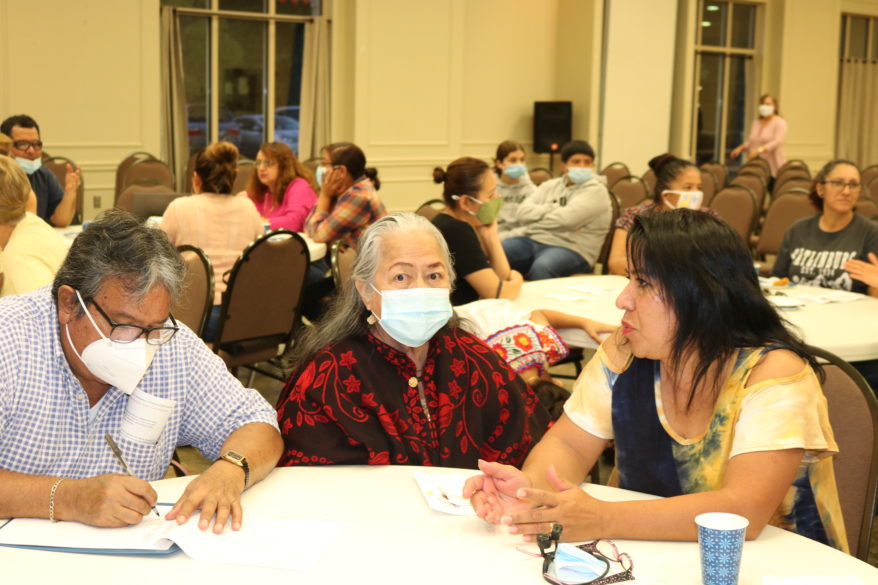
TUPELO. Una luz de esperanza en el norte
Para el alto porcentaje de hispanos que asintieron en el Decanato cinco, el liderazgo apasionado del Padre Murphy en St. James y Danna Johnson, para Catholic Charities en el área, St. James es el centro durante años del NMW en la diócesis. Han acogido a varios visitantes, conferencistas nacionales y locales, exponentes del arduo trabajo con los migrantes promoviendo una cultura cálida de acogida a los extranjeros.
Este año, como de costumbre, por invitación del Padre Tim Murphy, el ministerio hispano de la parroquia, srepresentado por Raquel Thompson y Danna Johnson, Coordinadora de Caridades Católicas de Vardaman, y Coordinador del Ministerio Hispano de San Cristóbal Pontotoc, la Semana Nacional de la Migración se celebró nuevamente en St. James. En esta ocasión el público, principalmente angloparlantes, tuvo la oportunidad de intercambiar con el padre Clem Oya, Guadalupe Meyer, activista por los migrantes, y Josh Blackmon, joven empresario, y el abogado Brad Prewitt, vicepresidente de Circadence, una empresa de ciberseguridad, ambos reconocidos. en la comunidad de Tupelo y miembros activos de la parroquia de St. James.
Antes de la sesión, el padre Tim dirigió la lectura de la oración a la hermana Thea Bowman, sierva de Dios y promotora del entendimiento intercultural, quien “en tiempos de intolerancia e ignorancia, traigo sabiduría, conciencia, unidad y caridad”. Al finalizar el encuentro, dos presentaciones de danzas folclóricas destacaron la Herencia Hispana, que la parroquia celebró el pasado domingo 19 de septiembre.
VARDAMAN. Batatas–Boniatos: directos desde el campo a tu corazón
Orgullosos de su tierra, tradiciones y hospitalidad, los líderes religiosos y comunitarios se reunieron la mañana del 25 de septiembre en el Vardaman Catholic Charities Center para conversar con el padre Clem Oya, director de la oficina del Ministerio Intercultural de la Diócesis.
La audiencia conoció las ideas y declaraciones del Papa sobre los migrantes y refugiados, bien explicadas por el padre Clem Oya, y sobre las luchas de los niños traídos al país por sus padres, sin documentos. Los soñadores, representados por Guadalupe Meyer, quien explicó el dilema de los jóvenes como ella siente que Estados Unidos es su propio país porque no conocen otro, y cómo se siente una contradicción nacional – extranjero.
A última hora de la tarde el padre, Clem Oya y Lupe se reunieron con un grupo de mujeres que se reúne regularmente para crear actividades que las unan y en las que puedan ayudarse mutuamente.
La Junta de Caridades Católicas con el liderazgo de Danna Johnson ha puesto a Vardaman en el punto culminante diocesano y nacional con el trabajo silencioso y tenaz con los migrantes, encargados de poner las batatas en la mesa de los misisipianos y a nivel nacional. Vardaman está atrayendo a inmigrantes en busca de trabajo y superveniencia. Los lugareños ven a los migrantes ir y venir y también están tratando de comprender el fenómeno y cómo algunos extranjeros sienten y comparten el mismo amor por los campos y la gente en Vardaman.
El Centro de Apoyo al Migrante de Caridades Católicas entre sacerdotes, monjas, personal de parroquias y líderes comunitarios de toda la diócesis, trabajan en la misión de recibir a Jesús en los rostros de cada extranjero que ayudan a establecerse en la nueva tierra llena de esperanza y libertad.

